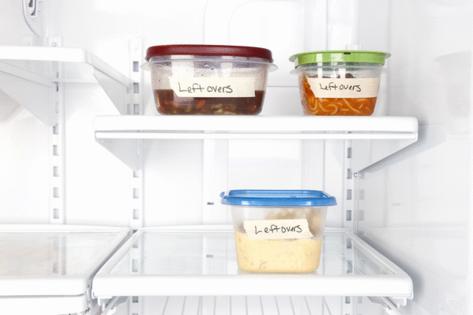On Nutrition: A good reason to eat leftovers
Published in Nutrition
Karen H. who reads this column in the Albany (Oregon) Democrat-Herald, writes: “Hello Barbara, I recently saw an article about how carbohydrates in rice, pasta and potatoes change when refrigerated. I can’t find the original article but one says, ‘When rice is refrigerated, it undergoes certain changes that can impact its nutritional composition. One notable effect is the increase in resistant starch content. This type of starch is not fully broken-down during digestion and acts as a prebiotic, fostering the growth of beneficial gut bacteria. Additionally, refrigerating rice can also lead to a reduction in its glycemic index. This means that after being chilled, the rice may cause a smaller and slower increase in blood sugar levels when consumed.’
"I have been avoiding white rice and pasta, and curtailing my potatoes for years because I thought of them as high-glycemic foods. This could be a game changer for those of us who love rice, pasta and potatoes but are trying to eat a healthy diet as well as diabetics. Could you please research about this more and report on it in a column?”
Glad to, Karen. There really is something to this, according to some studies. Food scientists explain that when starch (such as the complex carbohydrates in pasta and rice) is cooled, some of it is “retrograded” to a form called resistant starch.
Resistant starch is just that. It is resistant to digestion and therefore acts similar to dietary fiber in the body. That means it does not supply calories like other carbs and so may blunt the rise in blood sugars seen with other types of carbs. Instead, resistant starch travels down the digestive tract and ferments in the lower intestine to provide food for good bacteria. In this way, it acts like a probiotic.
As great as this sounds, not all the starch in rice and pasta is turned into resistant starch. Still it appears to be enough to at least partially slow down the rise in blood sugars seen after a high-carb meal. A 2021 study in the International Journal of Research in Medical Sciences found that rice cooled for 12 hours caused a lower blood sugar response in healthy volunteers when compared to freshly prepared hot rice.
Some foods are naturally high in resistant starches, even without refrigeration after cooking, according to Ohio State University. These include brown rice, potatoes, whole grains, oats, barley, lentil, peas and green bananas.
Resistant starch appears to form when cooked foods such as potatoes, rice and pasta are chilled for 12 to 24 hours. It’s this process of cooling that creates the resistant starch. So, you can enjoy your leftovers reheated or cold; the resistant starch will still be there. And, as always, portion control is still key.
____
©2025 MediaNews Group, Inc. Distributed by Tribune Content Agency, LLC.










Comments